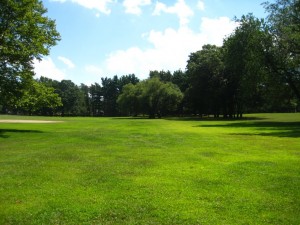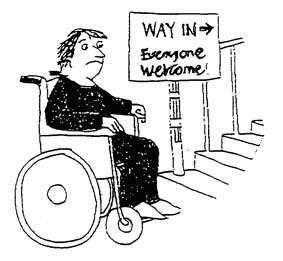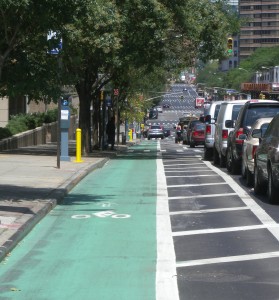Annotated Bibliographies 1-10
1.
Hospers, Gert-Jan. “Lynch’s The Image Of The City After 50 Years: City Marketing Lessons
From An Urban Planning Classic.” European Planning Studies 18.12 (2010): 2073-
- Business Source Complete. Web. 5 Feb. 2016.
Kevin Lynch is an architect who taught urban planning for thirty years. In the article, Lynch’s The Image of the City after 50 Years: City Marketing Lessons from an Urban Planning Classic, the writer explains the main elements that Lynch concluded that people see in a city. He also introduces the term “image ability”, which is defined as “that quality in a physical object which gives it a high probability of evoking a strong image in any given observer”. Lynch concluded that most people see cities as a built image. The five main elements of cities consist of paths (lines of movement), edges (transition zones), districts (distinctive city zones), nodes (strategic meeting zones), and landmarks (singular objects). These five things usually overlap. “Lynch hoped authorities would pay closer attention to urban designs and to “improve the quality-of-life (Lynch 2075)”, of those who live in the area. City marketers are extremely concerned with the image of their city. A poor image could negatively affect economic performance in that area. Lynch concludes that the link between a city’s image and its built environment can be exploited for the purpose of city marketing.
2.
Beer, Chris. “The Contingent Public Value Of ‘Good Design’: Regulating The Aesthetics Of The
Australian Urban Built Environment.” Australian Journal Of Public Administration 73.2
(2014): 282-292. Business Source Complete. Web. 5 Feb. 2016.
In the article, The Contingent Public Value of ‘Good Design’: Regulating the Aesthetics of the Australian Urban Built Environment, proposes that the built environment in Australian cities should be more visually appealing. Aesthetic regulation is aimed to promote the good design and beauty but is not the only goal. The writer goes in depth about the history of aesthetic value. The manifestation of the concern of rapid urbanization stemmed from the ‘City Beautiful’ movement that arose from the United States. Public value today, is a rationale for aesthetic regulation but has not always been historically. Recently there has been studies aiming to analyze ‘the value of urban design’. The writer examines the specific forms of public value and how over-regulation and under-regulation would be a danger. Also about the issues in the design of greater regulatory practice. Finally it concludes that taste and good design remain controversial within the design between professionals.
3.
Vogel, Steven. “On Alienation From The Built Environment.” Ethical Theory & Moral Practice
17.1 (2014): 87. Advanced Placement Source. Web. 5 Feb. 2016.
In the article, On Alienation from the Built Environment, the author takes time to describe the actual meaning of the work environment and how it is not often used in the context it was meant for. Steven Vogel considers himself an environmental philosopher. Vogel claims, “…the built world appears in most environmental discussions not as the environment but as a threat to the environment (88)”. Vogel also suggests that we are alienated from the built environment itself which in fact makes us alienated from the environment itself. The environment in which most people live in are socially constructed places. Environmental problems are in fact social problems. Because we do not recognize the origin of things and the role of nature we therefore fail to recognize the human nature, socially surrounding up. The tragedy in what Vogel calls alienation can be overcome by making collective decisions as a whole to improve the true environment, instead of a series of individual motives.
In article,” Build a Positive Atmosphere in the Waiting Room to Make Patients Comfortable and Happy”, list the major influences the waiting room has on the patients mood. Waiting time in a waiting room is crucial to a persons patience level, anxiety, mood, and level of pain. The mood and attitude of doctors, nurses, or other people who work in a doctors office can also influence the patients mood . “Not being greeted by a receptionist… can also impact the patient’s mood”.
Major conditions can change a person’s mood in a waiting room. Lighting, artwork, furniture, reading material, Internet access and technology, and the overall layout can change someone’s experience in a waiting room . The lighting in a waiting room, for example, is very important because a dark dim place does not seem very suitable to be treated.
By having a hospital nearby, student may want to feel they someplace safe to go if an accident occurs. The layout of the hospital is very important. Having a hospital on campus is a certain luxury that most people do not have in their built environment.
Construction is very important to building the built environment. Many thing that are of use in a particular area are enjoyed without thinking of the work it took to built such a place. The building of the environment itself has certain effects on our everyday lives.
7.
“The Importance of Green Spaces in Improving the Health of Communities.” The Playing Field, November 26, 2014. http://theplayingfield.org.uk/importance-green-spaces-improving-health-communities/.

“The Importance of Green Spaces in Improving the Health of Communities.” The Playing Field, November 26, 2014. http://theplayingfield.org.uk/importance-green-spaces-improving-health-communities/.
Green spaces are very important for the health and well being of human beings. The article, “The importance of green spaces in improving the health of communities”, suggests and proves that green spaces are very important in healthy development. There are certain feel good factors that people experience while doing outdoor recreational activities. There are many positive impacts of having green spaces and some negative repercussions because of a lack thereof. Access of green spaces may influence those living in the area to exercise more frequently. Having green spaces is also linked to a better immune system, sleep, and can save money in the future for mental or physical health problems. Most people living in deprived areas so not have access to green spaces. Also the lack of green spaces can even lead to depression. The article also emphasizes the importance of allowing the community to decide what they want in their community.
8.
Downs, Anthony. “Traffic: Why It’s Getting Worse, What Government Can Do.” The Brookings Institution. Accessed March 27, 2016. http://www.brookings.edu/research/papers/2004/01/01transportation-downs.
“The Importance of Green Spaces in Improving the Health of Communities.” The Playing Field, November 26, 2014. http://theplayingfield.org.uk/importance-green-spaces-improving-health-communities/.
Downs, Anthony. “Traffic: Why It’s Getting Worse, What Government Can Do.” The Brookings Institution. Accessed March 27, 2016. http://www.brookings.edu/research/papers/2004/01/01transportation-downs.
Traffic is a major problem in the city of Atlanta. There has been contemplation of how to fix this problem in the built environment. Options include greatly expanding road capacity and greatly expanding public transportation but these ideas do not make sense realistically. The article suggests that the only solution to the problem is to deal with it because it is nearly impossible to eliminate congestion completely. The article does give ideas to slow down the rate it occurs in the future. Police could, “Respond more rapidly to traffic-blocking accidents and incidents”. We could also build more roads in growing areas but there are also some opponents to this idea believing it may cause more travelers. More High Occupancy Toll (HOT) Lanes and High-Occupancy Vehicle (HOV) Lanes, can be created to add to the overall capacity. The article also implies that, “traffic congestion often results from economic prosperity and other types of success”. Heavy traffic is a problem that has to be solved with patience.
9.
Technology’s Influence on Education.” Accessed March 31, 2016. http://source.southuniversity.edu/technologys-influence-on-education-76874.aspx.

There has been a major change in learning in the built environment. Technology has changed the way students do work and how they interact with their students. Technology in the classroom was meant to increase productivity in learning. The use of technology also promotes a more enjoyable way of learning including games with instant knowledge and answers. Children and adults both use technology for entertainment and learning. Laptops and cellular devices in the classroom show the major changes chalkboards. Without technology some advantages would not be available without technology. Along with the positive advances made there are also many negative sides to having fast accessibility to information. Some individuals use the internet for bullying purposes and distraction from work and school. The use of technology in everyday life show how the built environment has changed and how it is constantly changing. Technology has changed the way we learn and people’s lives as a whole.
10.
CDC | Accessibility | Disability and Health | NCBDDD.” Accessed March 31, 2016. http://www.cdc.gov/ncbddd/disabilityandhealth/accessibility.html.

Handicap accessibility is an issue in the fast pace are of Atlanta. The built environment is not specifically designed for those who struggle with a disability. Every aspect of the built environment should be accessible to different types of people, those who are not the majority. Some examples of accessibility includes access for those in wheelchairs. Some places only has stairs which inhibits people in wheelchairs use or access to that certain area. Those in wheelchairs are the most accommodated group with a disability. Those who have other disabilities to other senses have a harder time surviving on their own let alone in a major city.. The article, “Accessibility”, offers a solution to this problem which is called the, “Universal Design”. This offers a solution to the problem. This implies that items and the design of the built environment could be used for all types of people. This could help people with disabilities to lead somewhat normal lives on their own.



